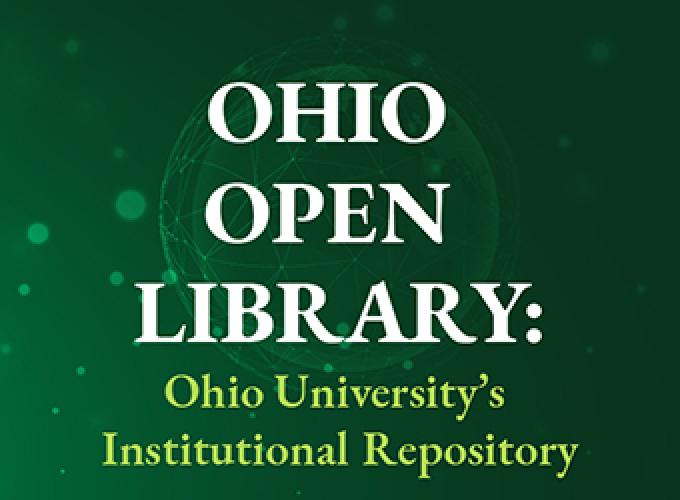
OHIO Open Library serves as repository for the 2021 Virtual Expo

University Libraries’ OHIO Open Library is an open access institutional repository for collecting and preserving the work of faculty, students and staff here at Ohio University. With works ranging from copies of the Southeast Ohio magazine to full geometry textbooks, the OHIO Open Library offers research and information on a myriad of subjects and can be used free of charge by people across the world.
This year, the OHIO Open Library will also be serving as a repository for some of the many projects that will be on display for the OHIO Virtual Expo. (Students must register for the Expo by March 15.)
“Students can’t present their results (in person) on campus, so we’re hoping that the posting of their work in the OHIO Open Library creates an opportunity for the campus community to see the students’ scholarly and creative activities,” said Damon DeBorde, the head of metadata services at the Libraries and one of the OHIO Open Library’s administrators.
Those that elect to be included in the judging process for the Virtual Expo will be automatically included in a new content collection in the OHIO Open Library, according to Janet Hulm, the assistant dean for collections and digitization strategies at University Libraries.
“(This) collection will include links to the videos and social media posts that the students will be uploading to participate in the Expo,” she said.
Although the OHIO Open Library is a relatively new initiative, the online archive has already garnered a worldwide audience, with readers located everywhere from Ohio and Colorado to Finland and the Philippines. That means this year’s Virtual Expo materials will be viewable by people around the globe.
“What the students and their mentors are producing is often valuable, viable research and very interesting creative endeavors,” DeBorde said, “and we want to make that as accessible as possible.”
DeBorde said that the OHIO Open Library’s accessibility is what makes the archive different from some of the Libraries’ other collections. The entire archive is open access, which means that you don’t have to be a member of the OHIO community or pay a fee to access the material.
The OHIO Open Library is also an inexpensive and relatively easy way to share materials outside of the Virtual Expo. For example, much of the Open Library is made up of textbooks, MFA theses and editorial materials created by students, faculty and staff at OHIO.
“A lot of the records are submitted by OHIO-affiliated authors,” DeBorde said. “It’s all about making data, information and knowledge freely accessible and discoverable to anyone around the world.”
Hulm explained that the OHIO Open Library is part of Digital Commons, an open access platform that was developed by Berkley Press (Bepress) to make publishing easier and less cost-prohibitive for those at academic institutions. Often much of the research and other costs are placed on universities and individual researchers, while publishers take a large part of the profits.
“I appreciate the disruptive nature of open access,” Hulm said, “and an institutional repository is a pretty safe way to go about that because faculty have a lot of control about what they put up … as do the students, and this is a way to highlight the significant work that is done at a specific institution.”
Now, Digital Commons is used by almost 600 institutions around the world to showcase creative and scholarly work.
DeBorde said that a Digital Commons initiative like the OHIO Open Library was important for the University because increased accessibility benefits both the students, faculty and staff whose work is showcased and the readers who gain scholarly materials free of charge.
Read more about the OHIO Open Library.
